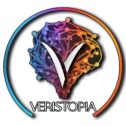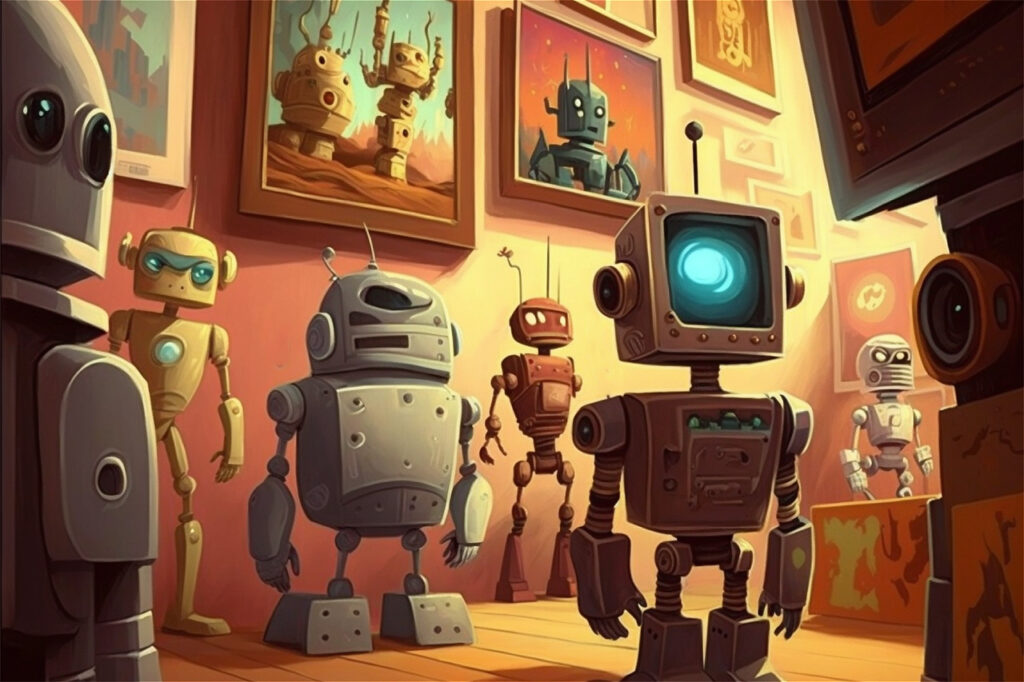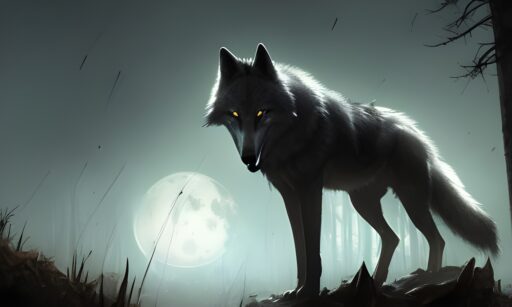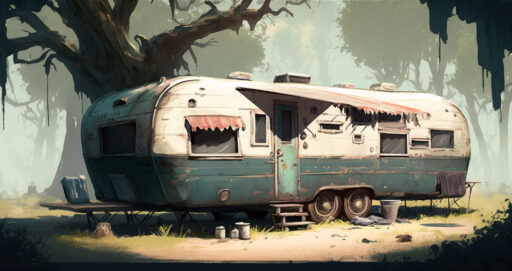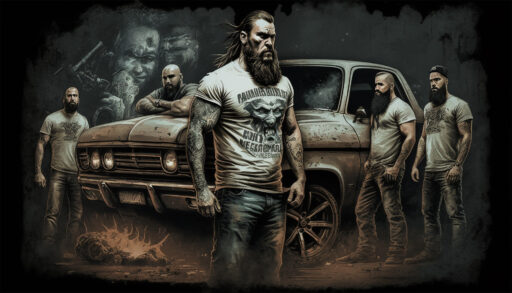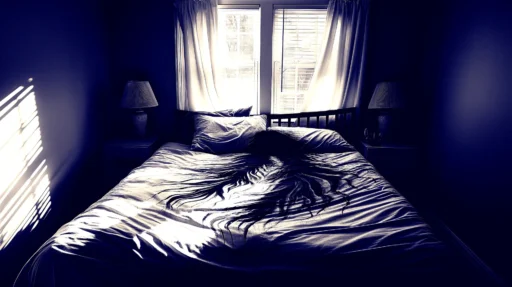AI art is all the rage these days and also a source of great controversy. I don’t want to minimize the issues that need to be worked through, for example was permission received before using people’s artwork or photography to train the AI; or what are the ethics of using AI to mimic a current professional artist and potentially taking money from their pocket? but the usage I’m talking about does not in my opinion raise any ethical issues and can offer a huge value creatively to a writer.
I’m not a visual writer. When I picture a scene I don’t actually see it in my head, at most there are vague shadows and outlines of what people look like, where they are standing etc. If asked to describe my characters in any detail, I can’t really do it. I can tell you all about what they are thinking and feeling, but what their face looks like? Nah. I don’t think that’s a terrible thing in and of itself it can be limiting at times because the physical elements of what things look like and where they are placed play into stories. However, until now there hasn’t really been anything I could do about it since I am sadly not independently wealthy and can’t hire and artist to just churn out concept art for me on a whim.

And then AI Art arrived and with it the promise of being able to generate artwork from a short description. I can do short descriptions!
If you’ve ever tried any of the endlessly multiplying AI Art tools you’ll have noticed that they have some severe limitations but when we’re talking about concept art these limitations are much less of an issue. For example you don’t know exactly who it’s going to interpret your description so if you have a really precise scene in mind that’s going to be frustrating. On the other hand, if you are like me and only have a shadowy image, suddenly you’ve got lots of new details to inspire your writing. The other thing that AI art gets wrong a lot is just not understanding physics and the real world. So characters will have 3 eyes when they ought to have 2 or there’ll just be random out of place lines in an image. That would be a show stopper for a published work, but if the purpose of the art is just to inspire the writer it doesn’t matter at all.
Character Art
The first way I am using AI Art in my writing is to generate character art. I feed my tool of choice (Midjourney gives far better results than anything I’ve previously tried) with a basic description and whatever details have surfaced in my mind and then see what it comes up with. The initial response to the prompt gives you four thumbnails and from there you can pick one to upscale, choose to create variations based on one of them or adjust your prompt if you’re not happy with any of them. My initial prompt for this was:

Full body of twenty year old woman, long multi-colored hair, nervous look on her face, fashionable modern clothing, in urban fantasy style, character concept –chaos 0 –ar 2:3
As you can see it’s not quite a normal description. I try to keep it relatively simple because complicated situations confuse the AI and even then while it’s got the general concept it’s not 100% mapping to what I said. For my purposes though it was close enough so I selected option 2 and created some variations.

Of those, the fourth one spoke to me the most so I chose to upscale that one. Now the thing about upscaling is it doesn’t just give you a higher resolution image, it also adds extra details. Sometimes that’s good, sometimes that’s bad. But if you don’t like what it does, you can tweak it again, that’s the fun thing about this process you can spend as much or as little time on it as you want. In the end here is Julia,a character who, until now, all I knew about physically was in that prompt: twenty year old woman, long multi-colored hair, nervous look on her face, fashionable modern clothing.
Now I have a physical reference, something to look at when I’m thinking about how she might act. She looks a little tougher than I had originally seen her in my head and I like that, maybe not such a wallflower after all. That’s going to color how I write about her going forward and having a specific look will help me remember the character better too.
You don’t have to generate full body images of course, you can have Midjourney create headshots instead and here’s where things get really cool. I can take the image I’ve already created and use that a base image to create more, so that way any future images stay at least somewhat similar.
/imagine https://URL-HERE character concept, headshot, twenty year old woman, long multi-colored hair, portrait, head, scared –ar 2:3

Scene Concept Art

The other way that I’m using AI art is to help me visualize scenes better. This has a dual purpose for me since I’m posting writing on my blog and I’m not attempting to make any money off it so I can’t afford to purchase art for every blog post. Having the AI create a scene for me gives me a feature image that I can use on the post and also helps to inspire my writing. Again, the goal here is not to create a picture perfect representation of what is in my head but rather to use the limited details in my mind to spin a picture which can in turn stimulate my brain to new ideas.
For example I have a short story about someone who is haunted by shadows. The shadows are very vaguely described so I fed this into Midjourney
Shadows with humanlike shapes looming over person in bed at night, dark room, atmospheric lighting, detailed, in horror style, concept art –ar 3:2
Which gave me these thumbnails and I like the atmosphere, but you’ll notice that the AI, literal as it is, has the person in the bed, not laying on the bed. So I did a little tweak to the prompt as follows:

Shadows with humanlike shapes looming over person laying in bed at night, dark room, atmospheric lighting, detailed, in horror style, concept art –ar 3:2
And eventually I landed on this image. Now this isn’t what I originally pictured when I wrote the first draft of the story, but when I got to re-draft I will now be thinking about how this shadow looms over not just the person but the entire room. How it’s almost human but at the same time breaks the rules in disturbing ways and how there doesn’t seem to be any escape from it.
For me this process is something of a revelation. As someone who doesn’t think in those ways normally, just writing the prompts is forcing me to think more visually and then the inspiration I can get from the images that are generated opens up all sorts of new story ideas.
Learning Curve
It’s really ease to produce something with Midjourney but producing something that matches your vision is quite a bit harder. There are a lot of additional descriptors for drawing style, lighting, poses. It’s a lot and it takes trial and error to really master, but there’s no shortage of resources out there to help you with that and to get some basic character portraits doesn’t need much at all, even if you’re understandably concerned about the ethics of making money from AI art it would be a mistake to completely ignore what it can bring to your creative process.

And to give you just a sense of the range of what can be done let’s generate a few more images. First we’ll try this:
dragon breathing fire as it lands, lord of the rings, epic composition, detailed, in origami style, –ar 16:9
Pretty cool, I like the combination of the origami style with the flames even if it did ignore the bit about the dragon landing.

Okay, what about this one:
dwarven citadel amongst the snow covered mountains, lord of the rings, epic composition, detailed, fantasy, –ar 16:9
Sure looks like a dwarven citadel to me, suitable for any fantasy epic I’d say.
Now, what if we were to do some real vodoo and blend the two together. Yes Midjourney has a blend command that lets you combine 2 or more images together into a unique creation. So what do I get when I try that here? Something that clearly has elements of both the previous images but is also it’s own thing. Now tell me you don’t get any story ideas when you look at images like this!
If you’re curious and want to experiment you can join the Midjourney Beta for free and get 25 free image generations to try things out, but you will have to set up a Discord account (also free) if you don’t already have one. After that you’d need to select one of the paid plans, but at a modest $8 a month it’s not much of a burden.

Discover more from Veristopia
Subscribe to get the latest posts sent to your email.
